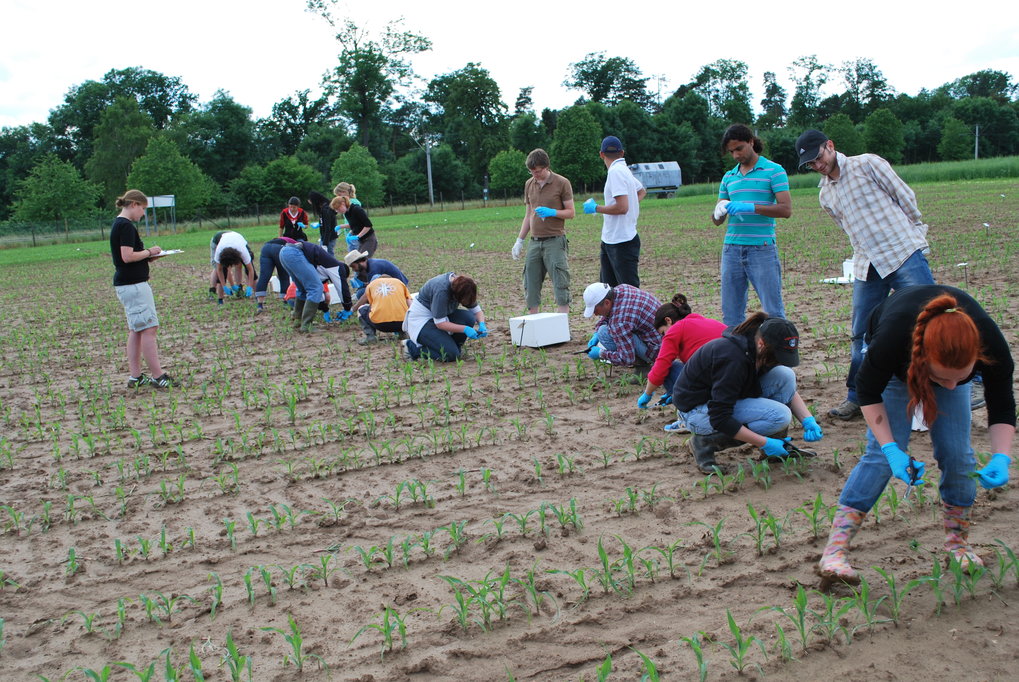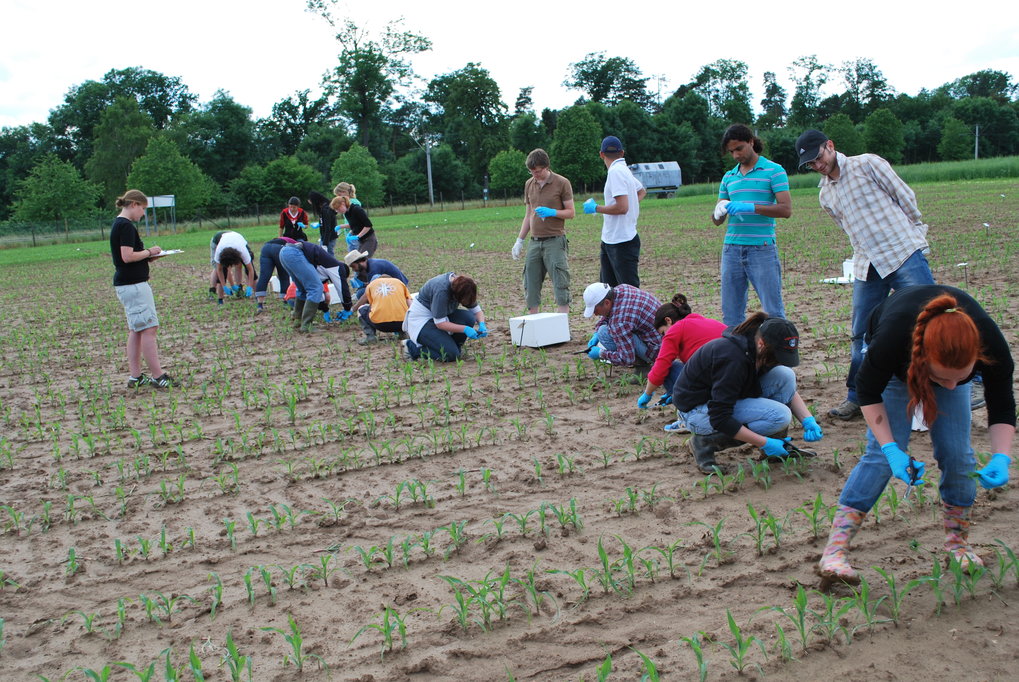Genetic fingerprint reveals new efficient maize cultivars
A computer model predicts the ability of different maize lines to produce high-yield offspring
The parent’s performance has little to do with the child's success – at least in maize. Even weak parent plants can be crossed in a way in which they produce vigorous offspring. But not all plants by far are suitable parents. Every single one has to prove its potential in time and cost intensive crossing experiments. Scientists Mark Stitt and Lothar Willmitzer from the Max Planck Institute for Molecular Plant Physiology, Potsdam, in collaboration with their colleagues Albrecht Melchinger, from the University of Hohenheim, and Thomas Altmann, from the Leibniz Institute of Plant Genetics and Crop Plant Research in Gatersleben, wanted to speed up this process. Together they developed a mathematical model that predicts surprisingly well if a plant will make a good parent or not. The model is based on genomic information obtained from the maize kernels and the metabolic profile of the seedlings. The results will be especially valuable for breeders.

Nowadays, most maize plants grown in our fields are hybrids. Their main advantage is the disproportionately high yield. Compared to the non-hybrid lines, they deliver up to 50 percent more crop. The phenomenon behind this effect is called heterosis. Although heterosis is of great importance for agriculture and the nourishment of the constantly rising world population, the reasons behind it remain elusive. The only thing certain is that the parents of hybrids have to come from inbred lines and must not be related. Of course, not all inbred lines are suitable for hybrid crossing. To find the perfect parents, expensive, laborious trials have to be performed. It takes breeders about ten years to develop a new variety, but climate change, global food crisis and the increasing need for biofuels demand faster solutions.
“Today we know that the growth of a maize plant or its cob production is not influenced by one single gene. On the contrary, there are many little differences in the genetic material that all contribute to the various traits. With the newest methods of genetic analysis we are able to analyse up to 56,000 of these DNA-loci,” explains Christian Riedelsheimer, first author of the study. Instead of altering the DNA, the scientists created an individual genomic profile for each plant, the so-called “genetic fingerprint”. To be able to correctly interpret the encoded information, they conducted field trials and spent three years planting, crossing, measuring yields, and analysing genomes. With the obtained data, they developed a mathematical model that predicts the potential of a parent plant based on the genomic pattern. A tiny amount of sample material, which can be taken from one single grain of maize without destroying its ability to germinate, is enough for the complex analyses. This was conducted by the University of Hohenheim in cooperation with Gatersleben.
A second indicator of which plants will make good parents can be found in the composition of the leaves. The amount of starch, sugars, amino acids, chlorophyll, and other substances provides a prediction about the breeding qualities, which is almost as accurate as the analysis of the genomic fingerprint. The technically challenging task of analysing these substances was conducted by scientists from the Max Planck Institute of Molecular Plant Physiology. “With our state of the art equipment and software that has recently been designed at our institute, we were even able to analyse the volatile metabolites very precisely,” says Max Planck director Mark Stitt. Everything else is newly developed statistics. “Similar to the genetic profile, it is not the amount of an individual metabolite that matters. Significant information is revealed by certain combinations and patterns,” states Riedelsheimer.
The new system does not rely on field trials – and is therefore cost-efficient. “If we wanted to test all possible crossings, we would have to plant maize on half of the earth’s surface.” This is not only utopian but also expensive. “One parcel of land costs €50. Since we tested two plots per variety at ten different locations it amounted to over €1,000 per variety,” sums up Albrecht Melchinger from the University of Hohenheim, where the field trials were conducted. “Analysing the genome with a DNA-chip and a robot costs only about €150”. Apart from the cost efficiency, the time saving is also remarkable; the DNA testing of the grains can be done in the winter. Meanwhile, the seedlings for the metabolite analysis are growing in the greenhouses. Therefore, the best parents can be selected and sowed in the same year.
Over the course of the past years, research has seen a change in paradigms. Scientists have abandoned the search for individual super-genes. Instead, they are now focusing on the interactions of many little differences in the genome. “The upshot is that we now have a totally new view on plants and this in turn leads to major improvements in the hybrid breeding programme,” states Melchinger.
There is so much genetic diversity in maize, one only has to know how to efficiently combine it.
CS/HR
